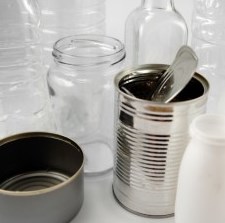3 Things You Didn’t Know About Barrier Packaging
September 2, 2014
Barrier – it’s the buzz word finding its way among most brand owners, packaging managers and innovation specialists. Yet there are many things still unknown about barrier labels, barrier packaging, barrier films and other barrier components working their way into product designs. Don’t worry, our heads are spinning too.
While you take a minute to get grounded, we figured we could take some time to touch on the not-so-well-known parts of barrier packaging that you likely haven’t thought of yet.
- It’s not all about oxygen.
Majority of the time, when the terms ‘barrier packaging’ get tossed around, our minds rightfully assume oxygen-barrier. While oxygen plays a major role in sustaining food’s appearance and properties, there are many other influencers of product integrity. For example, overexposure to light can cause deterioration of nutritional content and appearance. Too much moisture can lead to rapid spoilage or mold – and fluctuating temperatures can rapidly decrease a product’s shelf-life. Even gases and aromas can alter product components. Who wants plastic tasting lunch meat or cabinet-scented bread? Yuck. As long as customer’s demand for natural, fresh products without added preservatives continues to rise, brand owners may want to consider all the possible barrier packaging needs of their product – not just oxygen.
- It’s for more than just food.
Think barrier packaging is only for food products? Think again. According to the global research for functional and barrier coatings by end use, non-food products account for 38% of the market. From automotive additives to detergents, herbicides and personal care products, there are a plethora of non-food products that are being affected by environmental factors just as much as food – and their packaging is changing as a result. What’s driving these changes? Everything from the urge to ensure customer safety to enhancing shelf-appeal and improving functionality – it really depends on the product itself. Yet more and more non-food brands are becoming interested in barrier properties that can help perfect their product as well – and we don’t blame them!
- It has to be customized.
It’s without a doubt that improved packaging often sets the stage for enhanced product safety, consumer-appeal and a variety of other wonderful things – that’s why store shelves are ever-changing. Yet I know what you’re still thinking at this point… How can it save you money when it requires you to put more into the packaging itself? The key to adopting barrier technology is to NOT over-engineer it. Really, it comes down to finding the right balance between what barrier properties you need (like a few of those we discussed earlier) and what barrier properties are simply not necessary. Yes, this is going to entail engineering, testing, re-testing and qualifying – but it may just be the long-term solution your product needs – and your consumer desires.
We hope these three things worth knowing about barrier packaging have given you something to think about, but if you’re looking for more – try downloading our barrier IML whitepaper. Interested in learning more about developing a business case on barrier packaging? Give us a call.



